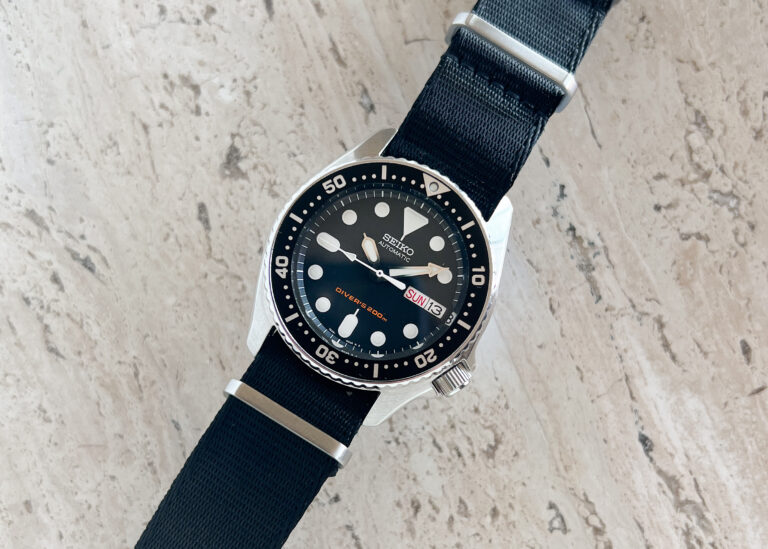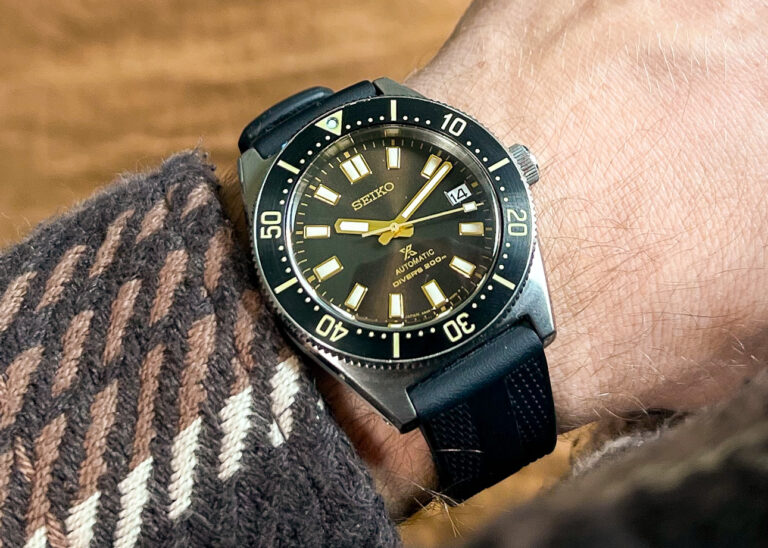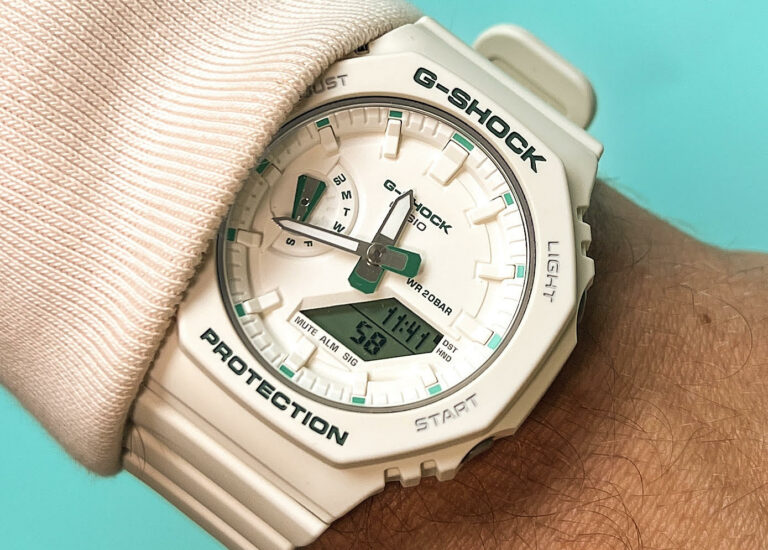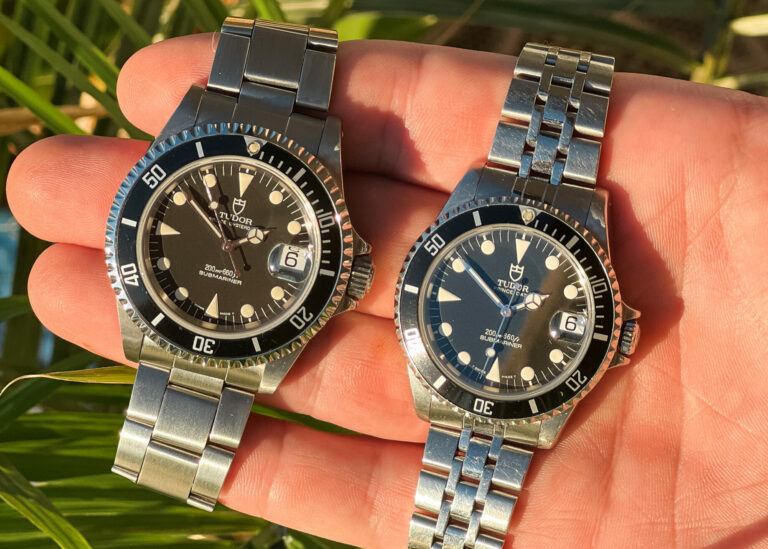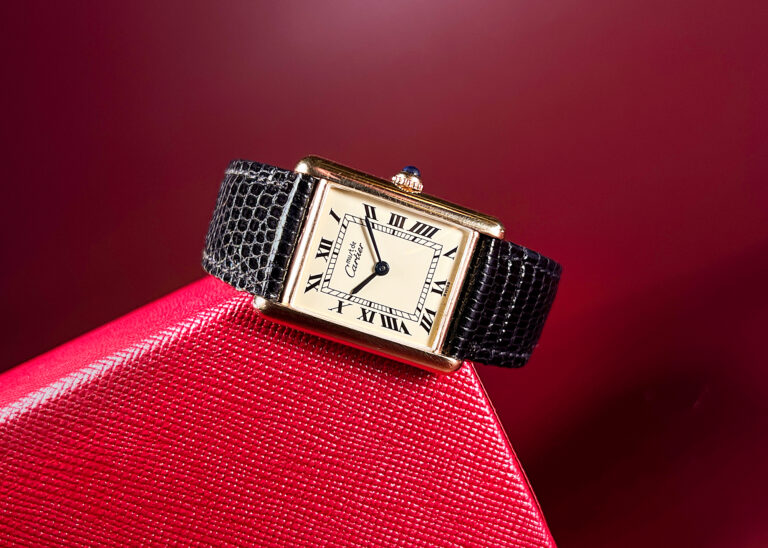Omega Speedmaster MK40 Triple Date Review: 3820.53 and 3520.53
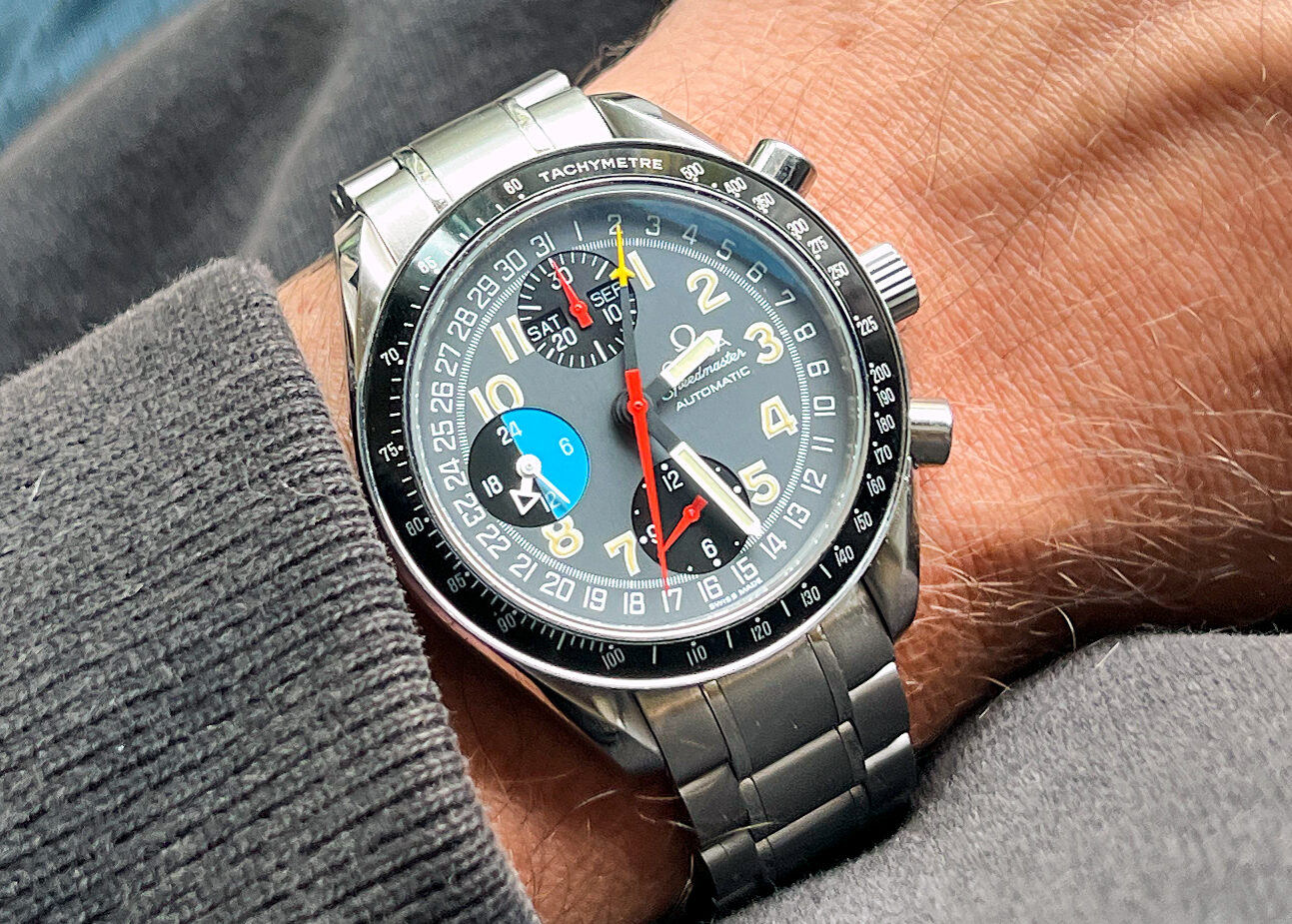
Every watch enthusiast should be familiar with the Omega Speedmaster Moonwatch. It’s iconic, classic, and has a rich history, but is perhaps a bit routine or expected in a collection. There’s also the fact that they’ve always worn a bit large for some at 42mm. Enter the Omega Speedmaster MK40.
From the moment I read Ben at Hodinkee’s article about his MK40 I was smitten, initially even more so by the Hodinkee collaboration that pays tribute to the original.
After some time, I came back to the original Omega Speedmaster MK40 for a few reasons. One, admittedly, was the price. When released, the Hodinkee retailed at $6,500, but you’d be lucky to find one for double that price these days. Second, and perhaps more importantly, was that the new watch features only aesthetic representations of the original’s functionality!
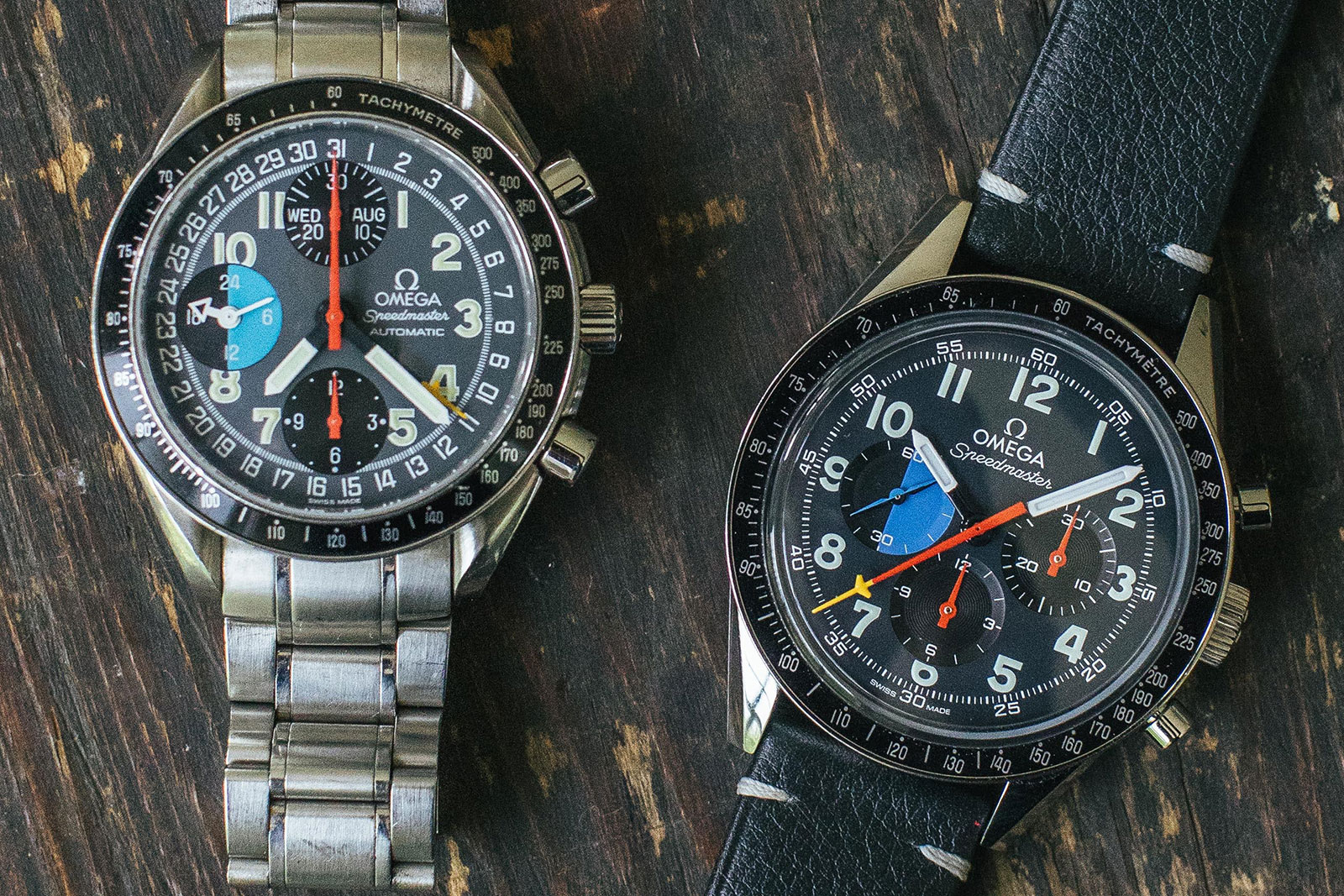
On the MK40, we see a red chrono hand and a separate yellow “airplane” date pointer. On the Hodinkee these two hands have been combined as a red chrono hand with a yellow tip, operating solely as a chronograph hand. Additionally, we’ve lost the AM/PM functionality at the 9 o’clock subdial of the MK40, and in its place on the Hodinkee is a similarly-colored chronograph seconds register.
There’s also just something cool about that bracelet and 90s look. It was settled, I had the MK40 on my list as one of the first watches I applied the “grail” label to.
The Case
When I finally purchased the MK40, having never seen one in the metal, I was taking a chance on its size and wearability. I had been struggling to find watches that felt at home on my wrist and I wanted this one to work so badly! Echoing the sentiment of another blogger, what immediately struck me when cracking open that red Omega case for the first time was – wow, this thing is compact!
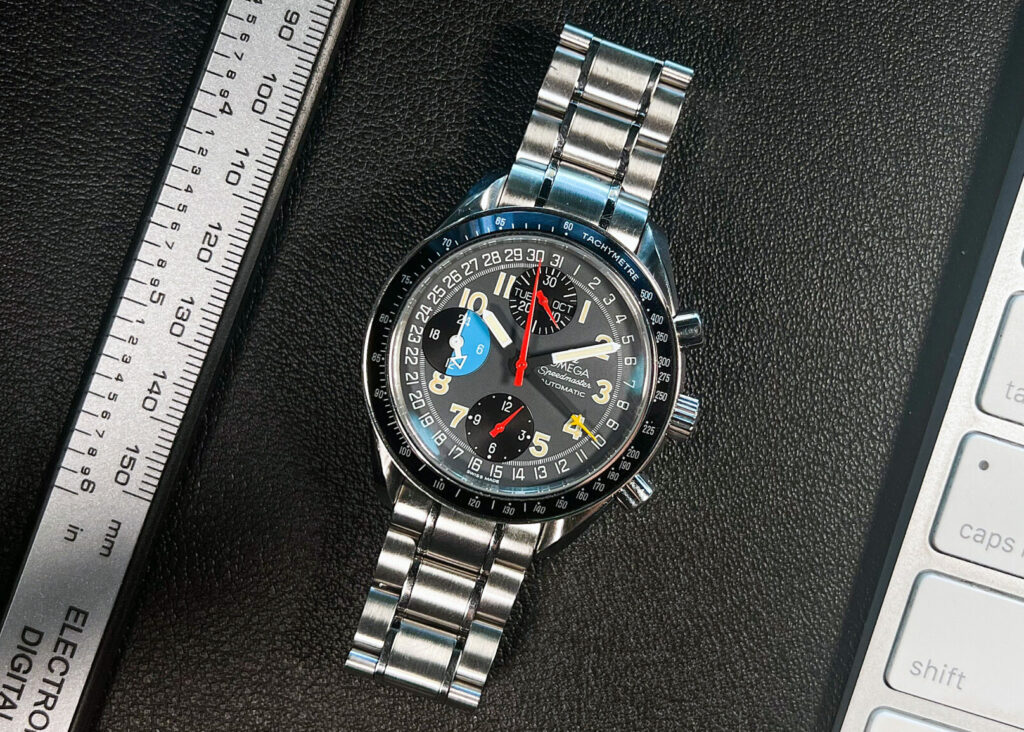
Having owned it for a few years now and having seen other watches come and go, the 38.5mm wide by 45mm tall MK40 sits in such a sweet spot of case sizing. At 13.5mm thick, it’s not exactly “thin”, but considering it is a chronograph, it’s completely satisfactory amongst the countless hockey puck chronographs in its price segment.
Thickness is also mitigated by the iconic, twisty, turndown lugs of the Speedmaster, a hallmark of the original Moonwatch also present on these reduced case size models.
The Dial
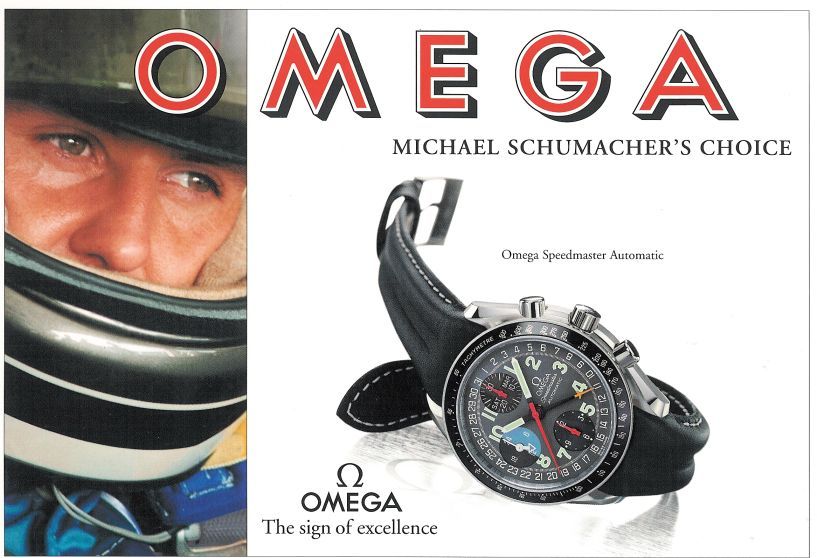
This reference is sometimes known as the “Schumacher”, for its ad campaign featuring the legendary F1 driver. Of all the variants in the Omega Speedmaster MK40 lineup, this is by far the most unique, interesting, and fun. I have to wonder what they were thinking at Omega when this design came by the desk, but I’m so glad it made its way into production. The pops of primary colors against the faded gray dial, flanked by lume that has aged to a creamy pumpkin make for a wonderful, aesthetically exciting dial.
The Omega Speedmaster MK40 Triple Date was introduced around 1996 and produced into the early 2000s. Omega switched from using tritium to luminova on this reference around 1997 or 1998. As such, you can find more patinaed versions with tritium and “cleaner” luminova versions.
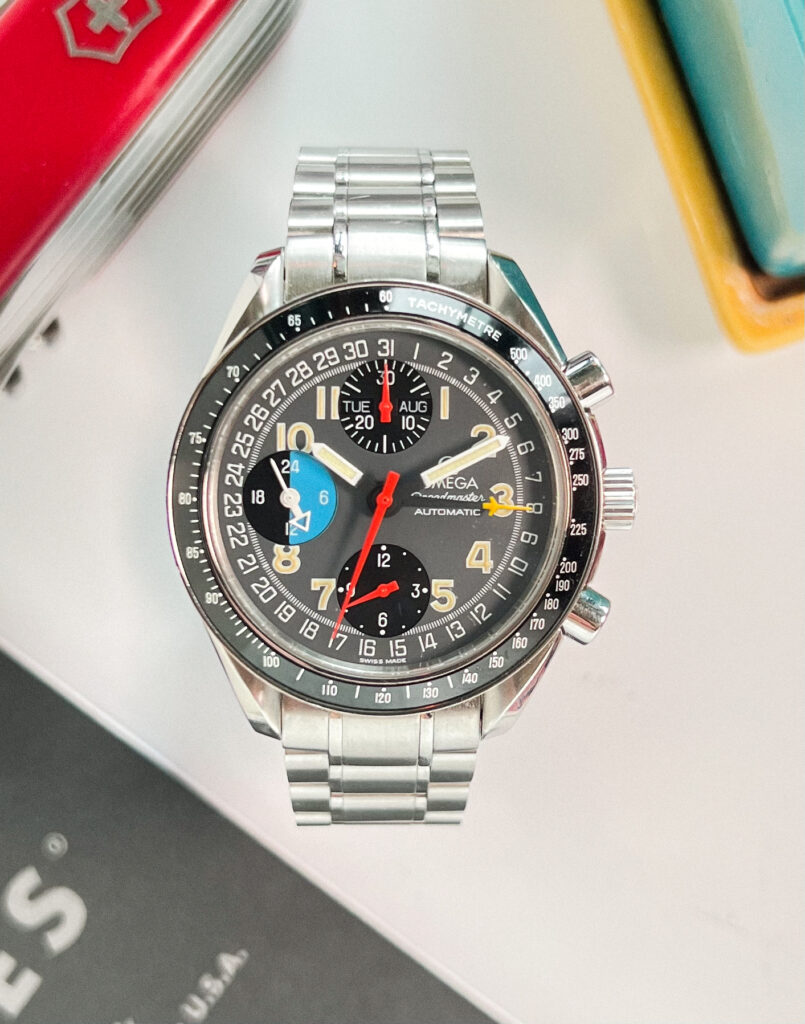
Negative space on the MK40 dial is limited, it feels like a million things are happening at once, and I absolutely love it. The dial features Arabic hour and date markers, three subdials, Omega Speedmaster branding at 3 o’clock, all dressed up in red, blue, yellow, and tritium. My favorite outfits to pair this watch with are monochrome looks begging for a splash of color.
I love the triple-date complication. As someone who finds themself thrown off when a watch lacks a date window, I appreciate the extra information every time I look down at my wrist.
The Movement
The Omega Speedmaster MK40 Triple Date models are built on the Calibre 1151 movement based on the Valjoux 7751.
The standard Speedmaster Reduced models use an ETA 2890 movement with a piggyback chronograph mated to it. This allegedly makes these Reduced models a pain to service. On the standard Speedmaster Reduced, you can also see that the chronograph pushers are not aligned with the crown as the chrono and the main movements are essentially two movements stacked together.
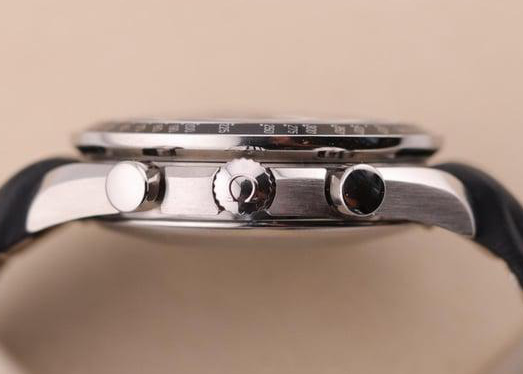
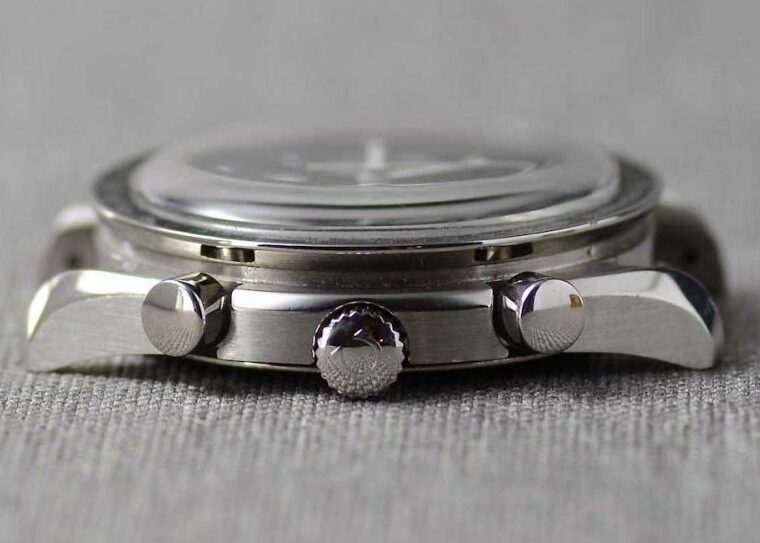
The Calibre 1151/Valjoux 7751 found in the MK40, being a true chronograph, has all its pushers aligned. It’s a workhorse movement that has been used in many chronograph and moonphase watches across the industry.
Something to note, the 7751 rotor only winds in one direction, and freewheels in the other. If you get the watch into a free spin while strapped to your wrist, you can feel it whirring away – and the case will do a little wobble as the rotor whips around inside.
The watch has a relatively involved setting process. One pull of the crown sets the pointer date, which advances the month after 31, a full pull of the crown sets the time as expected, and a tiny, recessed button near 10 o’clock changes the day of the week. I keep a golf tee or pen around specifically for this button. While it’s a bit of work to set up, I actually enjoy the process each time. This is in stark contrast to setting a non-quickset three-hander, which somehow is always a pain.
The Strap and Bracelet
My Omega Speedmaster MK40 Triple Date came on the original double-ridged Omega strap that was rapidly deteriorating. To note, the MK40 had different references depending on whether it came on a strap or a bracelet. On a strap, its reference was 3820.53, and on a bracelet 3520.53. I wore mine on the crumbling strap for about a week before sourcing a new old stock OEM bracelet on eBay.
At this point in my collecting, I wasn’t a huge fan of bracelets, either aesthetically or comfort-wise. Somehow, this watch flipped the switch on that mindset. The moment I installed the bracelet the watch took on a new character, and I “got it”. It helped that the bracelet on this watch is surprisingly comfortable for an “oyster” style and hugged my wrist perfectly. With its hidden clasp under a subtle “Omega” stamp, this is one of my favorite bracelets to wear.
The Verdict
The Omega Speedmaster MK40 has been gaining more attention as an affordable, smaller variant of the Moonwatch. There’s so much I could say about this watch. I fawned over it for years before picking one up. I can confidently say it’s the one watch that will always have a spot in my collection. It’s a curveball to throw into the rotation when your black diver or field watch gets old. It’s functional with its triple date setting. There are some fantastic dial variations in the line, most notably the blue with silver bezel and the standard black dial that can sometimes feature lume pots that have aged to a nice pumpkin.
Only time will tell how collectible this reference becomes, but if price trend sites like chrono24 or watchcharts are any indication, prices are on the rise. If you’re thinking about it, I’d encourage you to take one for a spin!
The Specs
Case material: Stainless steel
Case diameter: 38.5mm
Lug width: 18mm
Lug-to-lug: 45mm
Thickness: 13.5mm
Movement: Calibre 1151/Valjoux 7751

